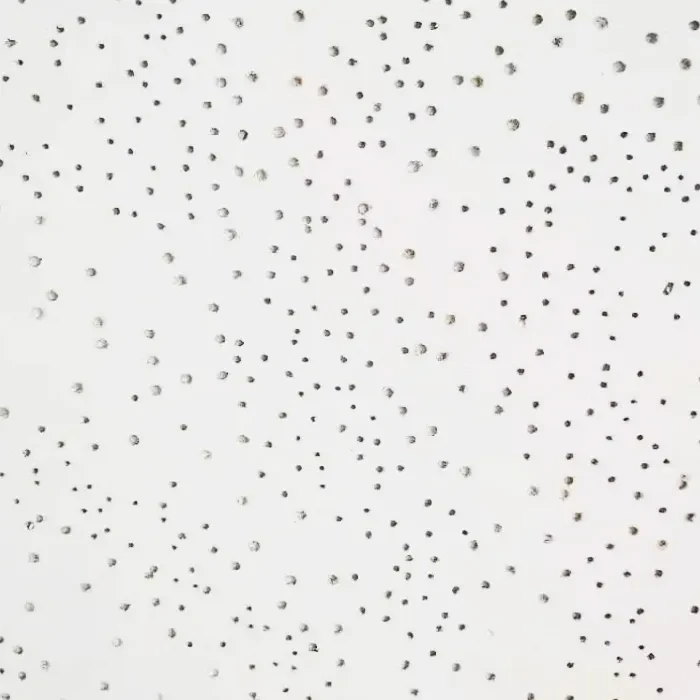Dec . 11, 2024 05:17 Back to list
Components and Production of Mineral Fiber Ceiling Tiles Explained
What Are Mineral Fiber Ceiling Tiles Made Of?
Mineral fiber ceiling tiles are popular architectural components used in various commercial and residential spaces, primarily for their aesthetic qualities and functional benefits. Often referred to as acoustic ceiling tiles, they provide excellent sound absorption, visual appeal, and ease of installation. An understanding of what these tiles are made of reveals the underlying properties that make them effective and desirable in the construction industry.
Composition of Mineral Fiber Ceiling Tiles
Mineral fiber ceiling tiles are primarily composed of mineral-based materials, which can include a mix of natural and synthetic fibers. The most common raw materials in these tiles are
1. Mineral Wool (Rock Wool or Glass Wool) This is the primary component in many mineral fiber tiles. Mineral wool is created by melting rocks and minerals at high temperatures and then spinning or blowing the molten material into fibers. These fibers are known for their sound absorption capabilities, thermal insulation properties, and fire resistance. The production process of mineral wool enhances its strength and durability, making it a preferred choice for ceiling tiles.
2. Cellulose Some mineral fiber ceiling tiles also contain cellulose, which is derived from recycled paper products. Cellulose adds further acoustic properties to the tiles and contributes to sustainability. The combination of cellulose with mineral fibers provides a balance of strength, flexibility, and eco-friendliness.
3. Gypsum Although not always present, gypsum is sometimes included in the composition of mineral fiber ceiling tiles. It is a naturally occurring mineral that adds lightweight yet strong characteristics to the tiles. Gypsum also helps control sagging and enhances the overall durability of the ceiling system.
4. Binders and Coatings For the production of mineral fiber tiles, synthetic or natural binders are incorporated to hold the fibers together. These binders can be made from various materials, including latex or acrylic, which improve the tile's water resistance and overall performance. Additionally, coating layers may be applied for aesthetic finishes, fire resistance, and durability against moisture and stains.
Benefits of Mineral Fiber Ceiling Tiles
Understanding the makeup of mineral fiber ceiling tiles also highlights their benefits
- Acoustic Performance The fibrous structure of mineral wool significantly reduces sound transmission, which is particularly beneficial in office buildings, schools, and hospitals. This sound absorption contributes to a more comfortable and productive environment.
- Thermal Insulation Mineral fiber tiles provide thermal insulation properties, helping to regulate indoor temperatures
. This can lead to energy savings and improved indoor comfort levels.what are mineral fiber ceiling tiles made of

- Fire Resistance Mineral fibers are inherently non-combustible, making them suitable for installations in areas requiring strict fire safety regulations.
- Lightweight Mineral fiber ceiling tiles are relatively lightweight, which simplifies installation and reducing the load on ceiling structures.
- Eco-Friendly Options Many manufacturers offer mineral fiber tiles made from recyclable materials, addressing environmental concerns. The use of recycled cellulose in some products contributes to sustainability efforts.
Applications of Mineral Fiber Ceiling Tiles
Mineral fiber ceiling tiles are versatile and can be used in a variety of settings, including
- Commercial Buildings Offices, retail spaces, and conference rooms utilize these tiles to create acoustically comfortable environments.
- Educational Institutions Classrooms and auditoriums benefit from their sound absorption properties, enhancing the overall learning experience.
- Healthcare Facilities Hospitals and clinics employ mineral fiber tiles to help manage noise and create soothing atmospheres for patients and staff.
- Residential Spaces Home theaters, basements, and living areas may also feature these tiles for aesthetic appeal and sound control.
Conclusion
Mineral fiber ceiling tiles are made from a combination of mineral wool, cellulose, gypsum, and binders, all of which contribute to their impressive acoustic, thermal, fire-resistant, and lightweight characteristics. Their versatility makes them suitable for a wide range of applications in both commercial and residential environments. As sustainability becomes an increasingly important consideration in construction, the eco-friendly options available in mineral fiber ceiling tiles make them an appealing choice for modern architectural projects. Understanding their composition and benefits allows architects, builders, and homeowners to make informed decisions when selecting ceiling solutions.
-
Durable Ceiling T Grid Systems | Easy InstallationNewsAug.29,2025
-
PVC Gypsum Ceiling: Durable, Laminated Tiles for Modern SpacesNewsAug.28,2025
-
Pvc Gypsum Ceiling Is DurableNewsAug.21,2025
-
Mineral Fiber Board Is DurableNewsAug.21,2025
-
Ceiling Tile Clip Reusable DesignNewsAug.21,2025
-
Ceiling T Grid Modular DesignNewsAug.21,2025







